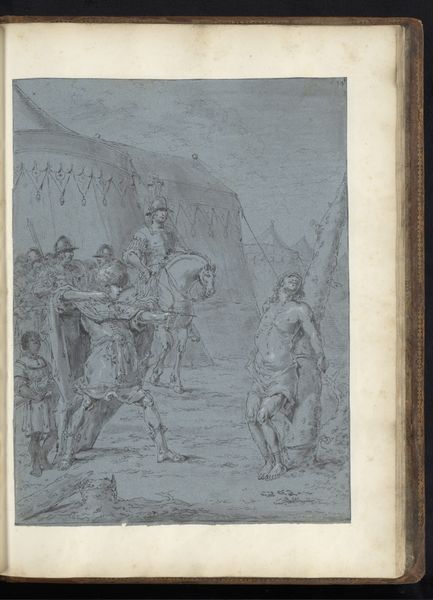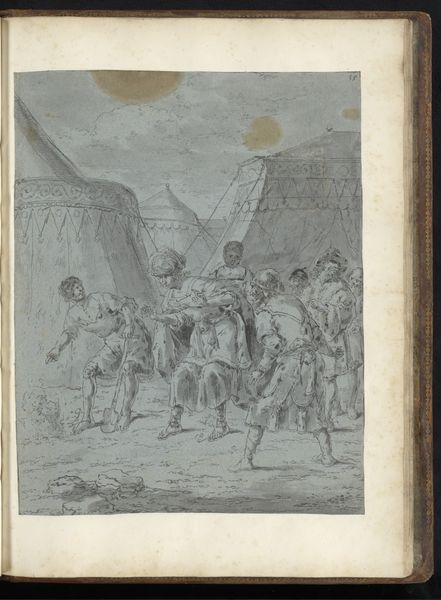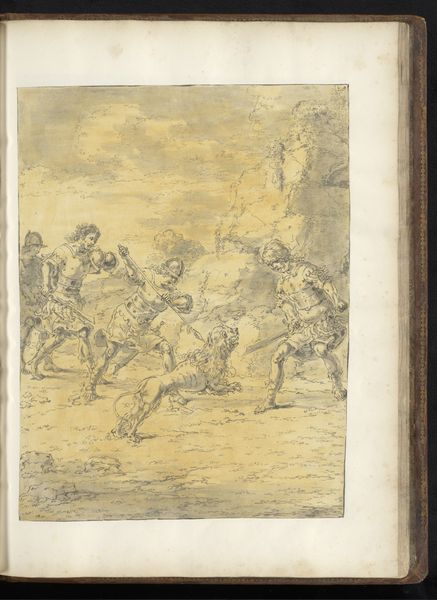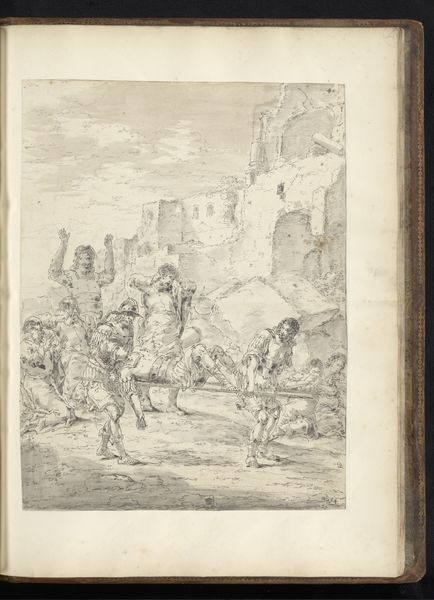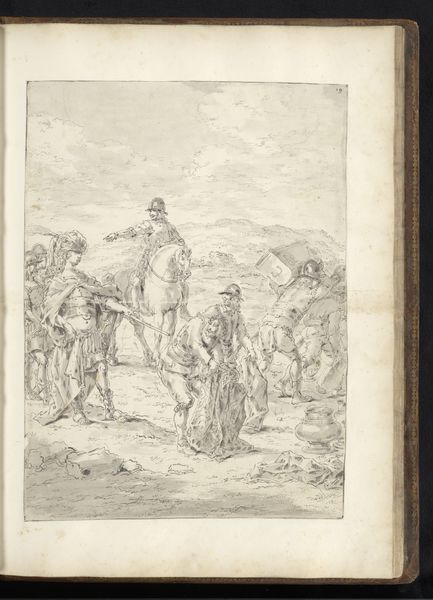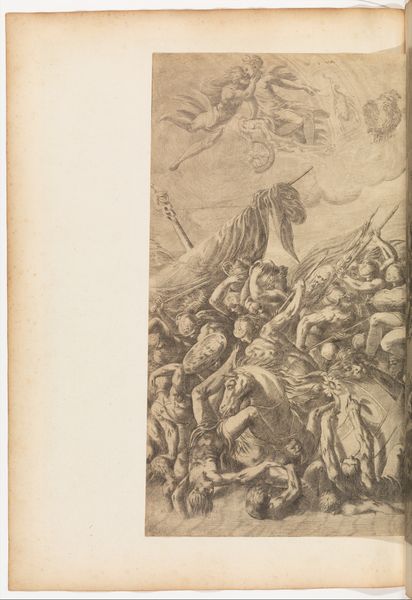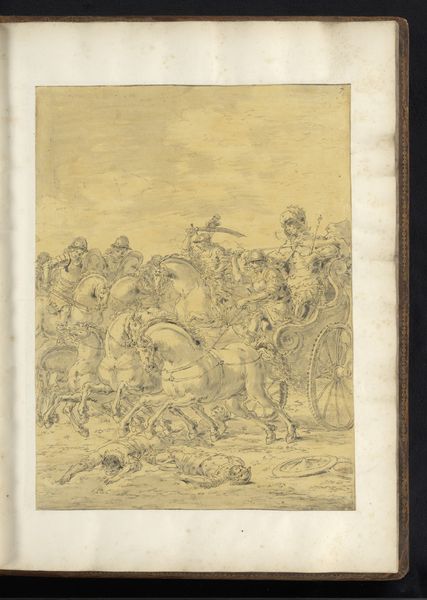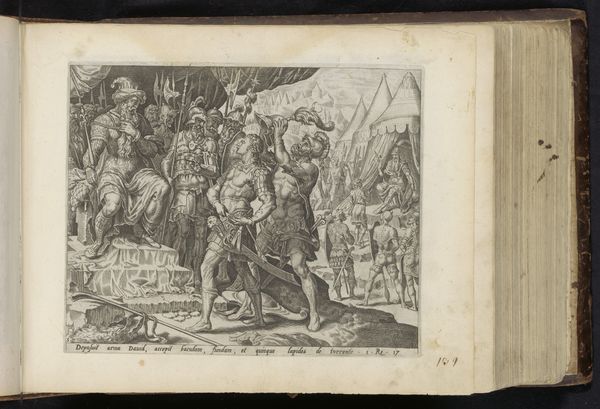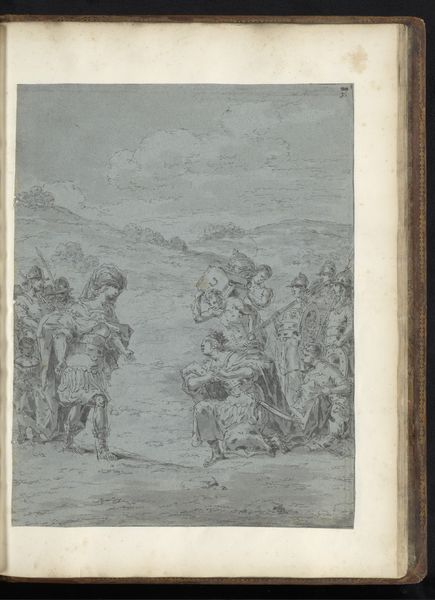
drawing, paper, ink, pen
#
drawing
#
water colours
#
narrative-art
#
baroque
#
figuration
#
paper
#
ink
#
pen
#
history-painting
#
mixed media
Dimensions: height 413 mm, width 323 mm
Copyright: Rijks Museum: Open Domain
Curator: Bramer's "Alexander the Great Burning his Baggage Train," likely from the mid-17th century, presents a scene of deliberate destruction. What impressions does this mixed-media drawing evoke for you? Editor: The somber palette certainly conveys a sense of gravity, a stripping away. There is something very intense about the central figure seeming to discard material possessions so freely in the face of what looks to be an indifferent or even hostile environment. I see power and sacrifice, or a twisted, self-destructive relationship with those concepts, bound up in this scene. Curator: Yes, Bramer was a master of capturing the weighty moment of decisive action, even in a somewhat monochromatic mixed media drawing with pen, ink and watercolors. Alexander's gesture resonates with similar choices depicted in ancient narratives of choosing conquest over comfort. Note that there is a gigantic rock formation shaped as a face staring the soldiers, emphasizing that they are small parts in a huge story. Editor: Absolutely. We need to remember the context. Seventeenth-century viewers would recognize in this self-imposed precarity a lesson about ambition and, perhaps, the perils of overreach in pursuing glory at any cost. Alexander became a potent symbol. And his choice to focus and move forward could either be understood as ruthless or admirable depending on one’s view of such historical ambition. Curator: His image had already crystallized through Roman interpretations of Greek tales, thus informing subsequent artistic and military thinking. The burning acts, even today, as an extremely rich symbol: purification through fire, commitment to a singular path...or a dangerously aggressive and autocratic rejection of all else. Editor: Right, it invites an ethical tightrope walk. Bramer gives us an Alexander unburdening himself for the sake of military advancement. I guess it is our place to situate that act within a wider framework of both his time and our own considerations around ruthless leadership, cultural appropriation and personal versus communal sacrifices. It makes one think. Curator: Exactly. There’s enduring visual potency there in its symbolism that remains with you, making us wonder on what kind of burden we might be keen on shedding to move forward, too. Editor: Well said. It invites deep thinking, even across centuries. Thank you.
Comments
No comments
Be the first to comment and join the conversation on the ultimate creative platform.


